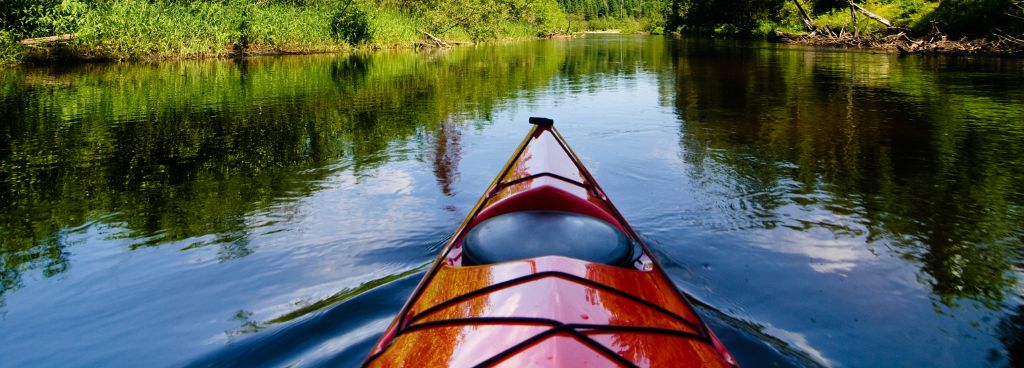Stories Worth Reeling In...
Last Updated on October 20, 2023
Welcome, fellow fishing enthusiasts, as we dive into the world of motorized options for your beloved kayaks. Today, we’re going to explore the intriguing debate surrounding the use of motors on fishing kayaks. We understand that the decision to add a motor to your kayak is a topic of great interest and discussion among anglers like yourself.
Let’s embark on this exciting journey together, where we’ll navigate through the waves of information and uncover the truths behind the motorized kayak debate.
Table of Contents

When it comes to fishing, time is of the essence. With a motorized kayak, you can experience a significant boost in speed and efficiency. The addition of a motor allows you to effortlessly glide through the water, covering more ground in less time. Say goodbye to paddling for hours and hello to reaching those distant fishing spots with ease. Whether you’re chasing elusive game fish or exploring vast waters, the increased speed provided by a motorized kayak gives you a competitive edge and expands your fishing horizons.
Mother Nature can sometimes test even the most skilled paddlers. However, with a motorized kayak, you can navigate challenging conditions with greater ease. Strong currents or windy days no longer pose insurmountable obstacles. The power of a motor allows you to maintain control and stability, enabling you to focus on your fishing technique rather than battling against the elements. Furthermore, a motorized kayak opens up a world of exploration. You can venture into larger bodies of water, reach remote fishing locations, and discover hidden fishing hotspots that were previously out of your paddling range.
Imagine being able to extend your fishing time without the worry of exhausting yourself. A motorized kayak can make that a reality. By eliminating the need for constant paddling, a motorized kayak conserves your energy reserves. This means you can spend more time on the water, casting your line and reeling in those prized catches. Whether you’re targeting trophy fish or enjoying a leisurely day on the water, the reduced fatigue and increased stamina provided by a motorized kayak open up a world of fishing opportunities. Take advantage of longer fishing sessions and savor every moment, knowing that your motor is there to support you.
Some kayaks are built with a built-in motor. Other anglers modify their paddle and pedal kayak with an aftermarket motor.
A motor can be installed on nearly any kayak, but a broad kayak with plenty of capacity is the ideal option. A kayak with a width of more than 40 inches is stable enough to balance the motor and batteries. The weight of additional gear is carried by boat with a capacity of more than 400 pounds. Look for a kayak with a flat region in the stern or bow where the motor can be mounted and an open space near the seat where the battery can be stored.
Electric motors are quiet, light, safe, and easy to power, making them a great choice for powering a kayak.

Before embarking on your motorized kayak fishing adventures, it’s crucial to familiarize yourself with the rules and regulations governing the use of motorized kayaks in your area. Each location may have specific laws in place, such as speed limits, horsepower restrictions, or designated areas for motorized watercraft. Understanding and adhering to these regulations not only ensures your safety but also helps to preserve the natural beauty of our waterways. Be sure to consult local authorities or visit relevant resources to stay informed about any restrictions or requirements in your area.
Adding a motor to your fishing kayak can have an impact on its stability and balance. It’s important to consider whether your kayak is designed to accommodate a motor or if modifications are needed to ensure optimal stability. The weight distribution and positioning of the motor can affect how your kayak performs in the water. Ideally, choose a kayak that is specifically designed for motorization or seek expert advice on making the necessary adjustments. You can enjoy a safer and more comfortable fishing experience by ensuring proper kayak design and stability.
As responsible anglers, it’s crucial to be mindful of the potential noise pollution and environmental impact associated with motor usage on your fishing kayak. The noise generated by motors can disturb not only the tranquility of the natural environment but also marine life in the vicinity. Consider the decibel levels produced by the motor and opt for quieter models when possible. Additionally, explore eco-friendly alternatives such as electric motors or techniques to minimize the environmental footprint. By being conscious of the noise and environmental impact, you can contribute to preserving our precious aquatic ecosystems.
There are various types of motors suitable for fishing kayaks, including electric trolling motors, gas-powered outboard motors, and even jet propulsion systems. The choice depends on your kayak’s design and the type of water you plan to fish in.
You may need specific mounting hardware or brackets to attach a motor to your kayak. The requirements can vary based on the motor type and your kayak’s design, so it’s important to check the manufacturer’s recommendations and possibly consult with a professional.
While motors can be a great addition, they come with a few downsides. They can be noisy, potentially scaring away fish. Motors also require additional maintenance and can add weight to your kayak, affecting its maneuverability. It’s important to consider these factors before installing one.
It’s essential to remember that the decision to use a motor on your fishing kayak should be based on a careful evaluation of your personal preferences, local regulations, and the suitability of your kayak. Take the time to research and understand the rules and regulations governing motorized kayaks in your area.
Consider your local regulations, evaluate your kayak’s compatibility, and prioritize safety and environmental stewardship. The joy of fishing from a motorized kayak awaits, and we’re here to support you along the way.